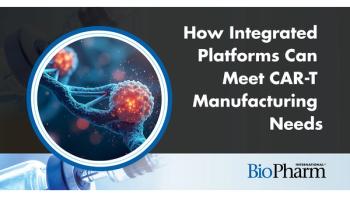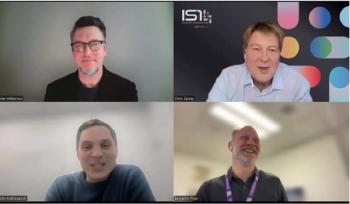
Industry Consortiums Work to Tackle COVID-19
As COVID-19 continues to spread, industry leaders are banding together to stop the disease in its tracks.
Industry consortiums have always been an important aspect of the bio/pharmaceutical space as they bring together key industry members to combine their individual resources to meet a common goal. Now more than ever, with COVID-19 still taking the world by storm, industry consortiums are necessary to advance specific programs and treatments aimed at stopping the spread of the disease.
For example, the National Institutes of Health (NIH) formed the Accelerating COVID-19 Therapeutic Interventions and Vaccines (ACTIV) public-private partnership in April 2020 to coordinate research strategies and fast-track the development of COVID-19 vaccines and treatments. The group consists of the Foundation for the National Institutes of Health; NIH’s sibling agencies in the Department of Health and Human Services, including the Biomedical Advanced Research and Development Authority, Centers for Disease Control and Prevention, and FDA; government agencies including the Department of Defense and the Department of Veterans Affairs; Countermeasures Acceleration Group (formerly known as Operation Warp Speed); the European Medicines Agency (EMA); and representatives from academia, philanthropic organizations, and biopharmaceutical companies.
With the support of other industry leaders, NIH has made strides in COVID-19 research by expanding its knowledge of viral biology and pathogenesis of SARS-CoV-2, the virus that causes COVID-19, in order to properly develop the tools needed to diagnose, treat, and prevent the disease.
Similarly, the COVID R&D Alliance, a consortium of therapeutic drug R&D leaders formed in March 2020, seeks to accelerate COVID-19 therapies and treatments by combining their resources and studies. Elliott Levy, MD, former senior vice-president of R&D at Amgen and a member of the COVID R&D Alliance, details how the group came about and the challenges and successes they have faced since banding together.
BioPharm: What steps were taken to form this Consortium?
Elliott (COVID R&D Alliance): The COVID R&D Alliance came together organically when R&D leaders from across the industry began talking to each other about the emerging global pandemic and how to effectively study potential therapeutics and vaccines for COVID-19 when information about the virus was incomplete and evolving in real time.
Specifically, on a Saturday morning conference call in March 2020, R&D leaders from GlaxoSmithKline (GSK), Amgen, Takeda, and several other large biopharma companies committed to forming an alliance to streamline R&D efforts to expedite the development of therapies for COVID-19. This began with establishing areas of focus, screening late-stage molecules, and testing approved drugs for efficacy against the virus. It expanded into sharing pre-competitive information and engaging in adaptive platform trials to efficiently test candidates.
BioPharm: Was it challenging to find companies willing to participate in this Consortium?
Elliott (COVID R&D Alliance): Not at all. In fact, we continue to receive inquiries from companies across the life sciences and biotech industries asking how they can help. There was an overall sense that the industry needed to step up and work together to help solve this challenge because we are experts at studying, developing, and manufacturing therapies and vaccines.
BioPharm: Why are Industry Consortiums important when it comes to COVID-19 research and advancements?
Elliott (COVID R&D Alliance): Government agencies and Non-Government Organizations (NGOs) played an important role in the response to COVID-19, however, there are gaps that exist that the industry is best suited to fill. Governments and NGOs often focus their efforts on early-stage research and late-stage manufacturing and distribution. Industry can fill the gap in between. Pharmaceutical companies conduct mid- and late-stage research and can advance promising candidates through large-scale trials. By creating a consortium, we were able to communicate and collaborate – which allowed us to avoid duplicating efforts, quickly share findings, and focus on areas that were most promising. This model can also be used going forward to prepare for future epidemics.
BioPharm: How challenging or difficult has it been to help advance COVID-19 research throughout the pandemic? Are there specific key areas of focus where the research is aimed?
Elliott (COVID R&D Alliance): The pandemic created many new research challenges that the biopharma industry had never faced. The first being ability to perform trials.
Specifically, within COVID-19 related trials, there were many challenges. Initially, trials across the world were testing the same compounds – many of which were later proven to be ineffective, like hydroxychloroquine. Sites and investigators faced difficulties synchronizing recruitment with the ebbs and flows of outbreaks. And there were other challenges, such as ensuring diversity in trial populations, educating health care providers, getting sites online, and a myriad of other issues stemming from a crowded space of institution trying to help sick patients.
The Alliance sought to address many of these challenges by participating in and launching adaptive platform trials, such as REMAP COVID, I-SPY COVID, and others. One adaptive, platform trial sponsored by Amgen called COMMUNITY was set up with the intent of allowing other life science companies to enter and test candidates and/or existing medicines that might have potential efficacy against COVID-19 symptoms. COMMUNITY trial sites were located across the world.
Given the speed of the disease, testing repurposed therapies was one strategy attempted. Ultimately, almost none of the repurposed therapies tested against COVID-19 showed efficacy. New monoclonal antibodies have shown benefits, but due to their sophisticated administration and cost, they are not currently available to much of the world.
This leads to one of the most important lessons we have learned from the pandemic: we are already too late if candidate development begins when outbreaks start. Due to globalization, it is likely more epidemics will emerge. Effective small molecule therapies and antivirals are critical to mitigate such pathogens, but they cannot be identified and studied fast enough if we don’t start before an outbreak strikes. Essentially, we must begin developing antiviral assets for the next potential epidemics now.
BioPharm: Do you have any specific examples of how you have helped further COVID-19 research?
Elliott (COVID R&D Alliance): In terms of quantifiable results, member companies in the Alliance helped to:
- Bring together 20+ global life science and biotech companies and created an open line of pre-competitive communication that will have some enduring implications as those collaborations are into new pandemic preparedness initiatives.
- Screen 4500+ pre-clinical compounds expediently – preventing inefficient studies, testing, and trials.
- Create an ecosystem of pre-competitive clinical trial and real-world data sharing that can be leveraged in the future study of other diseases in the future. In fact, eight members of the Alliance published an article in BioCentury laying out a shared vision for the future of expanded data sharing.
- Alliance members have entered candidates into multiple adaptive platform trials (REMAP, I-SPY, COMMUNITY). COMMUNITY was an adaptive platform trial launched by the industry, and individual members have launched dozens of trials. Results of these trials are being released as they occur so scientists worldwide can learn from them.
- Member companies also developed three COVID-19 vaccines that gained FDA, EUA, and two monoclonal antibodies therapies are currently in use today.
Newsletter
Stay at the forefront of biopharmaceutical innovation—subscribe to BioPharm International for expert insights on drug development, manufacturing, compliance, and more.




